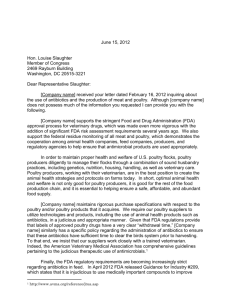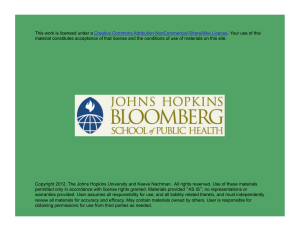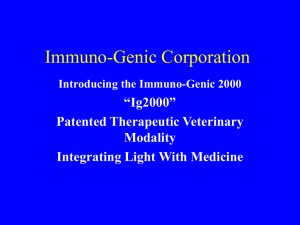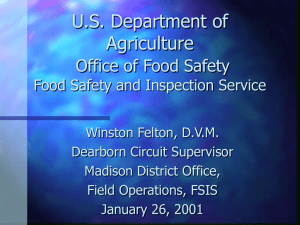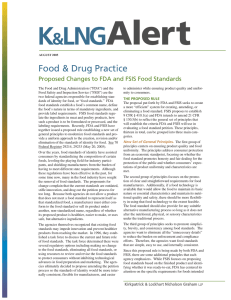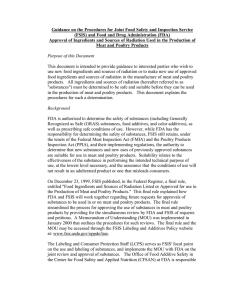SubtherapeuticABX_TPs_Mar2012
advertisement
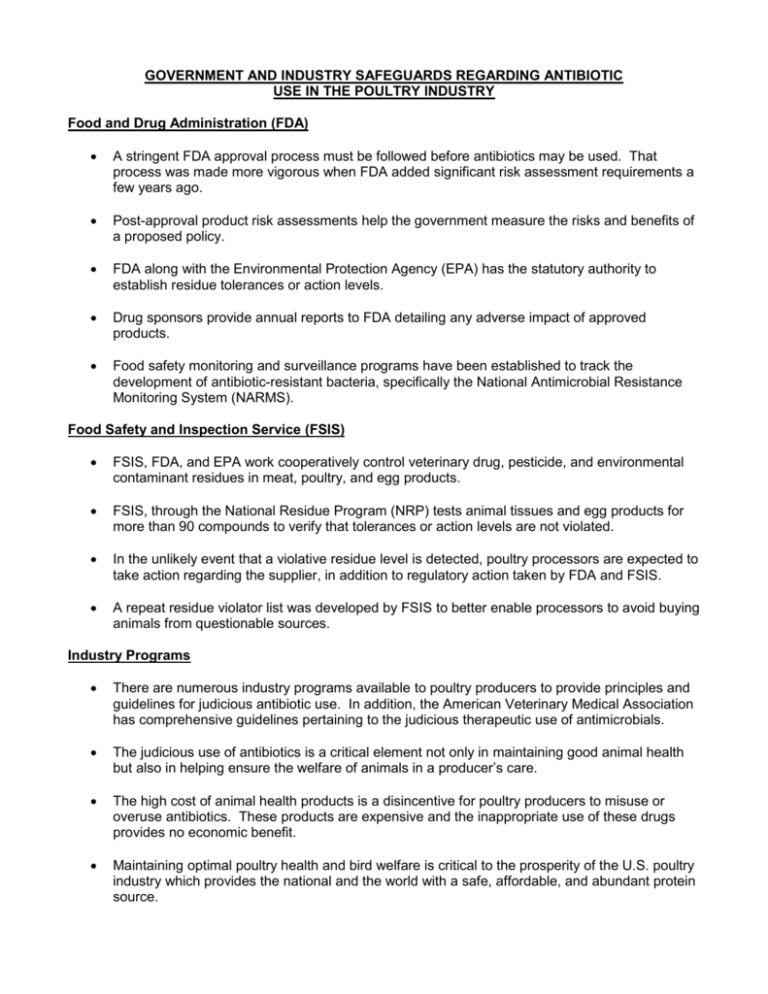
GOVERNMENT AND INDUSTRY SAFEGUARDS REGARDING ANTIBIOTIC USE IN THE POULTRY INDUSTRY Food and Drug Administration (FDA) A stringent FDA approval process must be followed before antibiotics may be used. That process was made more vigorous when FDA added significant risk assessment requirements a few years ago. Post-approval product risk assessments help the government measure the risks and benefits of a proposed policy. FDA along with the Environmental Protection Agency (EPA) has the statutory authority to establish residue tolerances or action levels. Drug sponsors provide annual reports to FDA detailing any adverse impact of approved products. Food safety monitoring and surveillance programs have been established to track the development of antibiotic-resistant bacteria, specifically the National Antimicrobial Resistance Monitoring System (NARMS). Food Safety and Inspection Service (FSIS) FSIS, FDA, and EPA work cooperatively control veterinary drug, pesticide, and environmental contaminant residues in meat, poultry, and egg products. FSIS, through the National Residue Program (NRP) tests animal tissues and egg products for more than 90 compounds to verify that tolerances or action levels are not violated. In the unlikely event that a violative residue level is detected, poultry processors are expected to take action regarding the supplier, in addition to regulatory action taken by FDA and FSIS. A repeat residue violator list was developed by FSIS to better enable processors to avoid buying animals from questionable sources. Industry Programs There are numerous industry programs available to poultry producers to provide principles and guidelines for judicious antibiotic use. In addition, the American Veterinary Medical Association has comprehensive guidelines pertaining to the judicious therapeutic use of antimicrobials. The judicious use of antibiotics is a critical element not only in maintaining good animal health but also in helping ensure the welfare of animals in a producer’s care. The high cost of animal health products is a disincentive for poultry producers to misuse or overuse antibiotics. These products are expensive and the inappropriate use of these drugs provides no economic benefit. Maintaining optimal poultry health and bird welfare is critical to the prosperity of the U.S. poultry industry which provides the national and the world with a safe, affordable, and abundant protein source.
